/*****************************************************************************
* J3D.org Copyright (c) 2001
* Java Source
*
* This source is licensed under the GNU LGPL v2.1
* Please read http://www.gnu.org/copyleft/lgpl.html for more information
*
****************************************************************************/
package org.j3d.geom;
// Standard imports
// none
// Application specific imports
// None
/**
* Generalised shape generator that is capable of generating almost any 2D
* shape using a standard algorithm.
*
*
* This class generates 3D coordinates for a single flat object in the X,Y
* plane with a Z value of zero. Because this is only generating 2D shapes
* in reality, it only supports the LINE_ geometry types. All Triangle and
* quad forms are not supported.
*
*
* The basic equation for a supershape comes from the standard form that you
* are familiar with for any ellipsoid.
*
* (x / a)^2 + (y / b)^2 = r^2
*
*
* Turning this into polar coordinates, the equation becomes
* 
* Below are some example shapes from the various coordinates.
*
*
* | m = 0. This results in circles, namely r = 1 |
* 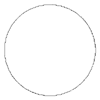 |
* | n1 = n2 = n3 = 1 Increasing m adds rotational symmetry
* to the shape. This is generally the case for other values of the n
* parameters. The curves are repeated in sections of the circle of angle
* 2 * pi/m, this is apparent in most of the following examples for integer
* values of m. |
* | m = 1 | m = 2 | m = 3 |
* m = 4 | m = 5 | m = 6 |
*
* 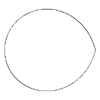 |
* 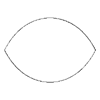 |
* 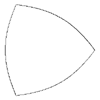 |
* 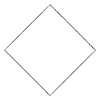 |
* 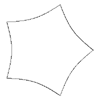 |
* 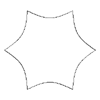 |
*
* | If n1 is slightly larger than n2
* and n3 then bloated forms result. The examples on the right
* have n1 = 40 and n2 = n3 = 10. |
* | m = 1 | m = 2 | m = 3 |
* m = 4 | m = 5 | m = 6 |
*
* 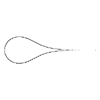 |
* 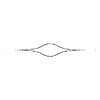 |
* 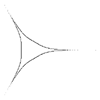 |
* 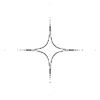 |
* 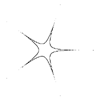 |
* 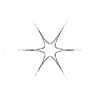 |
*
* | Polygonal shapes are achieved with very large values
* of n1 and large but equal values for n2 and
* n3. |
* m = 3,
n1 = 1000,
n2 = 1980,
n3 = 1980 |
* m = 4,
n1 = 1000,
n2 = 1000,
n3 = 1000 |
* m = 5,
n1 = 1000,
n2 = 620,
n3 = 620 |
* m = 6,
n1 = 1000,
n2 = 390,
n3 = 390 |
*
* 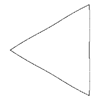 |
* 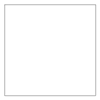 |
* 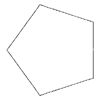 |
* 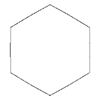 |
*
* | Asymmetric forms can be created by using different
* values for the n's. The following example have n1 = 60,
* n2 = 55 and n3 = 30. |
* | m = 3 | m = 4 | m = 5 | m = 6 |
* 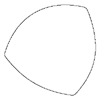 |
* 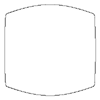 |
* 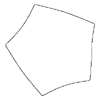 |
* 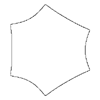 |
*
* | For non integral values of m the form is still closed
* for rational values. The following are example with n1 =
* n2 = n3 = 0.3. The max angle needs to extend from
* 0 to 12 pi. |
* | m = 1/6 |
* m = 7/6 | m = 13/6 | m = 19/6 |
* 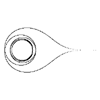 |
* 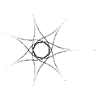 |
* 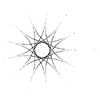 |
* 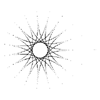 |
*
* | Smooth starfish shapes result from smaller values of
* n1 than the n2 and n3. The following
* examples have m=3 and n2 = n3 = 1.7. |
* | n1=0.50 | n1=0.20 |
* n1=0.10 | n1=0.02 |
* 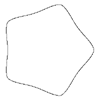 |
* 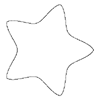 |
* 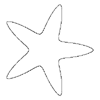 |
* 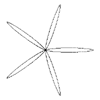 |
*
*
*
* The original idea as well as all the pictures are stolen from Paul
* Bourke's SuperShape page:
*
* http://astronomy.swin.edu.au/~pbourke/curves/supershape/
*
* @author Justin Couch
* @version $Revision: 1.2 $
*/
public class SuperShapeGenerator extends GeometryGenerator
{
/** Default number of segments used in the patch */
private static final int DEFAULT_FACETS = 50;
/** The number of sections used around the cone */
private int facetCount;
/** Coordinates of the generated curve */
private float[] curveCoordinates;
/** The number of valid values in the curve array (facetCount + 1 * 3) */
private int numCurveValues;
/** Flag to say the curve setup has changed */
private boolean curveChanged;
/** The m coefficient */
private double m;
/** The n1 coefficient used for the order of the square root */
private double n1;
/** The n2 coefficient used for the power of the cos term */
private double n2;
/** The n3 coefficient used for the power of the sin term */
private double n3;
/** The 1/a coefficient of the cos term pre-calculated */
private double one_on_a;
/** The 1/b coefficient of the sin term pre-calculated */
private double one_on_b;
/** The maximum angle value to use for any rotational components */
private double maxAngle;
/**
* Construct a new generator with default settings of 10 divisions over
* a single side between two control points.
*/
public SuperShapeGenerator()
{
this(DEFAULT_FACETS);
}
/**
* Construct a new generator with the specified number of tessellations
* over the side of the curve. The default coefficients will generate a
* circle. The maximum angle defaults to 2 * pi.
*
* @param facets The number of facets on a segment of the curve
* @throws IllegalArgumentException The number of divisions is less than 3
*/
public SuperShapeGenerator(int facets)
{
if(facets < 3)
throw new IllegalArgumentException("Number of facets is < 3");
curveChanged = true;
facetCount = facets;
numCurveValues = 0;
one_on_a = 1;
one_on_b = 1;
m = 1;
n1 = 1;
n2 = 1;
n3 = 1;
maxAngle = Math.PI * 2;
curveCoordinates = new float[(facets + 1) * 3];
}
/**
* Change the number of facets used to create this cone. This will cause
* the geometry to be regenerated next time they are asked for.
* The minimum number of facets is 3.
*
* @param facets The number of facets on the side of the cone
* @throws IllegalArgumentException The number of facets is less than 3
*/
public void setFacetCount(int facets)
{
if(facets < 3)
throw new IllegalArgumentException("Number of facets is < 3");
if(facetCount != facets)
curveChanged = true;
facetCount = facets;
}
/**
* Set the coefficient values to generate a new shape. The values a and b
* must not be zero and will generate an error if they are.
*
*/
public void setCoefficients(double m,
double n1,
double n2,
double n3,
double a,
double b)
{
if(a == 0)
throw new IllegalArgumentException("a is zero");
if(b == 0)
throw new IllegalArgumentException("b is zero");
this.m = m;
this.n1 = n1;
this.n2 = n2;
this.n3 = n3;
one_on_a = 1 / a;
one_on_b = 1 / b;
}
/**
* Set the maximum angle to use for phi. Set separately because for the m
* most part, this will be a value of 2 * pi and never change. No error
* checking is performed.
*
* @param angle The maximum angle to use in radians
*/
public void setMaxAngle(double angle)
{
maxAngle = angle;
}
/**
* Get the number of vertices that this generator will create for the
* curve. This is just the number of facets + 1.
*
* @return The vertex count for the object
* @throws UnsupportedTypeException The generator cannot handle the type
* of geometry you have requested
*/
public int getVertexCount(GeometryData data)
throws UnsupportedTypeException
{
int ret_val = 0;
switch(data.geometryType)
{
case GeometryData.LINES:
ret_val = (facetCount + 1) * 2;
break;
case GeometryData.LINE_STRIPS:
case GeometryData.INDEXED_LINES:
case GeometryData.INDEXED_LINE_STRIPS:
ret_val = facetCount + 1;
break;
default:
throw new UnsupportedTypeException("Unknown geometry type: " +
data.geometryType);
}
return ret_val;
}
/**
* Generate a new set of geometry items patchd on the passed data. If the
* data does not contain the right minimum array lengths an exception will
* be generated. If the array reference is null, this will create arrays
* of the correct length and assign them to the return value.
*
* @param data The data to patch the calculations on
* @throws InvalidArraySizeException The array is not big enough to contain
* the requested geometry
* @throws UnsupportedTypeException The generator cannot handle the type
* of geometry you have requested
*/
public void generate(GeometryData data)
throws UnsupportedTypeException, InvalidArraySizeException
{
switch(data.geometryType)
{
case GeometryData.LINES:
unindexedLines(data);
break;
case GeometryData.LINE_STRIPS:
lineStrips(data);
break;
case GeometryData.INDEXED_LINES:
indexedLines(data);
break;
case GeometryData.INDEXED_LINE_STRIPS:
indexedLineStrips(data);
break;
default:
throw new UnsupportedTypeException("Unknown geometry type: " +
data.geometryType);
}
}
/**
* Generate a new set of points for an unindexed quad array
*
* @param data The data to patch the calculations on
* @throws InvalidArraySizeException The array is not big enough to contain
* the requested geometry
*/
private void unindexedLines(GeometryData data)
throws InvalidArraySizeException
{
generateUnindexedLineCoordinates(data);
if((data.geometryComponents & GeometryData.NORMAL_DATA) != 0)
generateUnindexedLineNormals(data);
if((data.geometryComponents & GeometryData.TEXTURE_2D_DATA) != 0)
generateLineTexture2D(data);
else if((data.geometryComponents & GeometryData.TEXTURE_3D_DATA) != 0)
generateLineTexture3D(data);
}
/**
* Generate a new set of points for an indexed triangle array
*
* @param data The data to patch the calculations on
* @throws InvalidArraySizeException The array is not big enough to contain
* the requested geometry
*/
private void indexedLines(GeometryData data)
throws InvalidArraySizeException
{
generateIndexedLineCoordinates(data);
if((data.geometryComponents & GeometryData.NORMAL_DATA) != 0)
generateIndexedLineNormals(data);
if((data.geometryComponents & GeometryData.TEXTURE_2D_DATA) != 0)
generateLineTexture2D(data);
else if((data.geometryComponents & GeometryData.TEXTURE_3D_DATA) != 0)
generateLineTexture3D(data);
int idx_cnt = (facetCount + 1) * 2;
if(data.indexes == null)
data.indexes = new int[idx_cnt];
else if(data.indexes.length < idx_cnt)
throw new InvalidArraySizeException("Index values",
data.coordinates.length,
idx_cnt);
int[] indexes = data.indexes;
data.indexesCount = idx_cnt;
int idx = 0;
for(int i = 0; i < idx_cnt; )
{
indexes[i++] = idx++;
indexes[i++] = idx;
}
}
/**
* Generate a new set of points for a triangle strip array. Each side is a
* strip of two faces.
*
* @param data The data to patch the calculations on
* @throws InvalidArraySizeException The array is not big enough to contain
* the requested geometry
*/
private void lineStrips(GeometryData data)
throws InvalidArraySizeException
{
generateIndexedLineCoordinates(data);
if((data.geometryComponents & GeometryData.NORMAL_DATA) != 0)
generateIndexedLineNormals(data);
if((data.geometryComponents & GeometryData.TEXTURE_2D_DATA) != 0)
generateLineTexture2D(data);
else if((data.geometryComponents & GeometryData.TEXTURE_3D_DATA) != 0)
generateLineTexture3D(data);
if(data.stripCounts == null)
data.stripCounts = new int[1];
else if(data.stripCounts.length < 1)
throw new InvalidArraySizeException("Strip counts",
data.stripCounts.length,
1);
data.numStrips = 1;
data.stripCounts[0] = facetCount + 1;
}
/**
* Generate a new set of points for an indexed triangle strip array. We
* build the strip from the existing points, and there's no need to
* re-order the points for the indexes this time.
*
* @param data The data to patch the calculations on
* @throws InvalidArraySizeException The array is not big enough to contain
* the requested geometry
*/
private void indexedLineStrips(GeometryData data)
throws InvalidArraySizeException
{
generateIndexedLineCoordinates(data);
if((data.geometryComponents & GeometryData.NORMAL_DATA) != 0)
generateIndexedLineNormals(data);
if((data.geometryComponents & GeometryData.TEXTURE_2D_DATA) != 0)
generateLineTexture2D(data);
else if((data.geometryComponents & GeometryData.TEXTURE_3D_DATA) != 0)
generateLineTexture3D(data);
int idx_cnt = (facetCount + 1) * 2;
if(data.indexes == null)
data.indexes = new int[idx_cnt];
else if(data.indexes.length < idx_cnt)
throw new InvalidArraySizeException("Index values",
data.indexes.length,
idx_cnt);
int[] indexes = data.indexes;
data.indexesCount = idx_cnt;
int idx = 0;
for(int i = 0; i < idx_cnt; )
{
indexes[i++] = idx++;
indexes[i++] = idx;
}
if(data.stripCounts == null)
data.stripCounts = new int[1];
else if(data.stripCounts.length < 1)
throw new InvalidArraySizeException("Strip counts",
data.stripCounts.length,
1);
data.numStrips = 1;
data.stripCounts[0] = facetCount + 1;
}
//------------------------------------------------------------------------
// Coordinate generation routines
//------------------------------------------------------------------------
/**
* Generates new set of points suitable for use in an unindexed array. Each
* patch coordinate will appear twice in this list. The first half of the
* array is the top, the second half, the bottom.
*
* @param data The data to patch the calculations on
* @throws InvalidArraySizeException The array is not big enough to contain
* the requested geometry
*/
private void generateUnindexedLineCoordinates(GeometryData data)
throws InvalidArraySizeException
{
int vtx_cnt = getVertexCount(data);
if(data.coordinates == null)
data.coordinates = new float[vtx_cnt * 3];
else if(data.coordinates.length < vtx_cnt * 3)
throw new InvalidArraySizeException("Coordinates",
data.coordinates.length,
vtx_cnt * 3);
float[] coords = data.coordinates;
data.vertexCount = vtx_cnt;
regenerateCurve();
int vtx = 0;
int c_count = 0;
for(int i = 0; i < facetCount; i++)
{
coords[vtx] = curveCoordinates[c_count];
vtx++;
coords[vtx] = curveCoordinates[c_count + 1];
vtx++;
coords[vtx] = curveCoordinates[c_count + 2];
vtx++;
coords[vtx] = curveCoordinates[c_count + 3];
vtx++;
coords[vtx] = curveCoordinates[c_count + 4];
vtx++;
coords[vtx] = curveCoordinates[c_count + 5];
vtx++;
c_count += 3;
}
}
/**
* Generate a new set of points for use in an indexed array. The first
* index will always be the cone tip - parallel for each face so that we
* can get the smoothing right. If the array is to use the bottom,
* a second set of coordinates will be produced separately for the patch
* so that independent surface normals can be used. These values will
* start at vertexCount / 2 with the first value as 0,0,0 (the center of
* the patch) and then all the following values as the patch.
*/
private void generateIndexedLineCoordinates(GeometryData data)
throws InvalidArraySizeException
{
int vtx_cnt = getVertexCount( data);
if(data.coordinates == null)
data.coordinates = new float[vtx_cnt * 3];
else if(data.coordinates.length < vtx_cnt * 3)
throw new InvalidArraySizeException("Coordinates",
data.coordinates.length,
vtx_cnt * 3);
float[] coords = data.coordinates;
data.vertexCount = vtx_cnt;
regenerateCurve();
// Copy the raw coords, the make the set of indicies for it
System.arraycopy(curveCoordinates, 0, coords, 0, numCurveValues);
}
//------------------------------------------------------------------------
// Normal generation routines
//------------------------------------------------------------------------
/**
* Generate a new set of normals for a normal set of unindexed points.
* Smooth normals are used for the sides at the average between the faces.
* Bottom normals always point down.
*
* This must always be called after the coordinate generation. The
* top normal of the cone is always perpendicular to the face.
*
* @param data The data to patch the calculations on
* @throws InvalidArraySizeException The array is not big enough to contain
* the requested geometry
*/
private void generateUnindexedLineNormals(GeometryData data)
throws InvalidArraySizeException
{
int vtx_cnt = data.vertexCount * 3;
if(data.normals == null)
data.normals = new float[vtx_cnt];
else if(data.normals.length < vtx_cnt)
throw new InvalidArraySizeException("Normals",
data.normals.length,
vtx_cnt);
}
/**
* Generate a new set of normals for a normal set of indexed points.
* Handles both flat and smooth shading of normals. Flat just has them
* perpendicular to the face. Smooth has them at the value at the
* average between the faces. Bottom normals always point down.
*
* This must always be called after the coordinate generation. The
* top normal of the cone is always perpendicular to the face.
*
* @param data The data to patch the calculations on
* @throws InvalidArraySizeException The array is not big enough to contain
* the requested geometry
*/
private void generateIndexedLineNormals(GeometryData data)
throws InvalidArraySizeException
{
int vtx_cnt = data.vertexCount * 3;
if(data.normals == null)
data.normals = new float[vtx_cnt];
else if(data.normals.length < vtx_cnt)
throw new InvalidArraySizeException("Normals",
data.normals.length,
vtx_cnt);
}
//------------------------------------------------------------------------
// Texture coordinate generation routines
//------------------------------------------------------------------------
/**
* Generate a new set of texCoords for a normal set of unindexed points. Each
* normal faces directly perpendicular for each point. This makes each face
* seem flat.
*
* This must always be called after the coordinate generation.
*
* @param data The data to patch the calculations on
* @throws InvalidArraySizeException The array is not big enough to contain
* the requested geometry
*/
private void generateLineTexture2D(GeometryData data)
throws InvalidArraySizeException
{
int vtx_cnt = data.vertexCount * 2;
if(data.textureCoordinates == null)
data.textureCoordinates = new float[vtx_cnt];
else if(data.textureCoordinates.length < vtx_cnt)
throw new InvalidArraySizeException("2D Texture coordinates",
data.textureCoordinates.length,
vtx_cnt);
float[] texCoords = data.textureCoordinates;
}
/**
* Generate a new set of texCoords for a normal set of unindexed points. Each
* normal faces directly perpendicular for each point. This makes each face
* seem flat.
*
* This must always be called after the coordinate generation.
*
* @param data The data to patch the calculations on
* @throws InvalidArraySizeException The array is not big enough to contain
* the requested geometry
*/
private void generateLineTexture3D(GeometryData data)
throws InvalidArraySizeException
{
int vtx_cnt = data.vertexCount * 2;
if(data.textureCoordinates == null)
data.textureCoordinates = new float[vtx_cnt];
else if(data.textureCoordinates.length < vtx_cnt)
throw new InvalidArraySizeException("3D Texture coordinates",
data.textureCoordinates.length,
vtx_cnt);
float[] texCoords = data.textureCoordinates;
}
/**
* Regenerate the patch coordinate points. These are the flat circle that
* makes up the patch of the code. The coordinates are generated patchd on
* the 2 PI divided by the number of facets to generate.
*/
private final void regenerateCurve()
{
if(!curveChanged)
return;
curveChanged = false;
numCurveValues = (facetCount + 1) * 3;
if((curveCoordinates == null) ||
(numCurveValues > curveCoordinates.length))
{
curveCoordinates = new float[numCurveValues];
}
double div = maxAngle / (facetCount + 1);
int coord = 0;
for(int i = 0; i < facetCount; i++)
{
calculatePoint(div * i, coord);
coord += 3;
}
// First is same as last point.
curveCoordinates[coord++] = curveCoordinates[0];
curveCoordinates[coord++] = curveCoordinates[1];
}
/**
* Generate a single curve coordinate value point. Place it in the given offset of the
* coordinate array.
*
* @param phi The rotational angle to use
* @param offset The offset index into the ccordinate array
*/
private void calculatePoint(double phi, int offset)
{
double r;
double t1, t2;
t1 = Math.cos(m * phi / 4) * one_on_a;
t1 = Math.abs(t1);
t1 = Math.pow(t1, n2);
t2 = Math.sin(m * phi / 4) * one_on_b;
t2 = Math.abs(t2);
t2 = Math.pow(t2, n3);
r = Math.pow(t1 + t2, 1 / n1);
// Only ever set x and y. Z is always zero.
if(Math.abs(r) == 0)
{
curveCoordinates[offset] = 0;
curveCoordinates[offset + 1] = 0;
} else {
r = 1 / r;
curveCoordinates[offset] = (float)(r * Math.cos(phi));
curveCoordinates[offset + 1] = (float)(r * Math.sin(phi));
}
}
}


























































